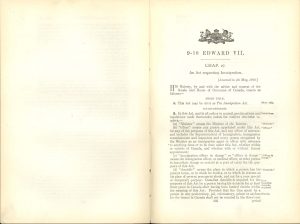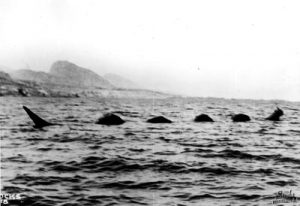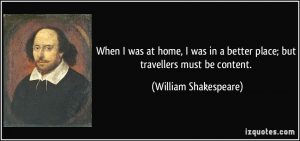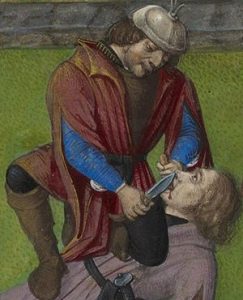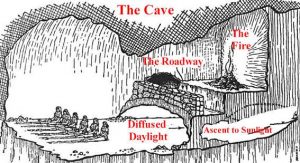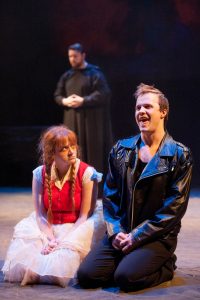Prompt: “Each student should select a section of Green Grass Running Water approximately 10 pages. The task at hand is to first discover as many allusions as you can to historical references (people and events), literary references (characters and authors), mythical references (symbols and metaphors). While I am suggesting a method to help organize your task — you should quickly discover that there is no method for making neat categories out of King’s numerous (and humorous) allusions and references. Instead of categories, what you will discover are connections, and inter-connections and cycles.”
______________________________________________________________
Green Grass Running Water: Selected Pages 136-148
Thomas King’s Green Grass Running Water, hosts a myriad of historical and popular allusions. Certainly, it is more noticeable in the chapters regarding the formation of the world, as characters of indigenous and Judaeo-Christian mythology intermingle to create a new origin story, however King subtly makes many references in his other chapters as well, creating a deliberate encyclopedic of tome of historical and pop culture references. Jane Flick’s Green Grass Running Water notes on illusions seems to provide an almost inexhaustible list of references. I have chosen pages 136-148 spanning two chapters, one about Coyote and another about Eli.
Eli
The first allusion King makes is of course Eli. “From Where Eli sat on the porch…” (King, Green Grass Running Water, 136) Eli is a reference to the Jewish prophet Eli in the Book of Samuel. Eli was a priest of Shiloh, military leader, and a judge before the monarchy in Israel began. It is important to know that Eli was born out of a prayer to god from his mother Hannah, who had trouble conceiving. A large plot point in GGRR is Alberta’s desire for children. Eli died by breaking his neck after hearing news of his sons’s death by hands of the philistines after the battle of Aphek. Eli is credited with the establishment of the Isreali monarchy. It is also interesting to note in Samaritan tradition, Eli is cast as a villain, and the reason why the Jewish people and Samaritans split. Eli founded left Mount Garizim and founded the temple of Shiloh which housed the Ark of Covenant. He was also the adopted father of Samuel. (New World Encylopedia, Eli)
Sifton
As Flick notes, Sifton was an “Aggressive promoter of settlement
in the West through the Prairie West movement, and a champion of the
settlers who displaced the Native population” This is of course referencing Sir, Clifford Sifton. Sifton was a lawyer, politician and businessman who lived from 1861 and died in 1925. His notable contributions to Canadian politics include: Member of Parliament in Manitoba from 1878 and 1881, He was an MLA for Brandon North in Manitoba in 1888. (Sir Clifford Sifton, The Canadian encyclopedia) His government helped to created the “Manitoba Public Schools Act” which revoked funding to catholic schools and made french no longer an official language of Manitoba. This cause uprisings of the French community. Sifton also is noted for advancements in immigration policy. (Manitoba Public Schools Act, Canadian Encyclopedia)
His treatment of Indigenous people was lacking to put it as an understatement. “He defunded the department of Indian affairs and indigenous education” (Sir Clifford Sifton, Canadian Encyclopedia) and approved Treaty No.8 which took a significant amount of land away from Indigenous people, to help promote the Klondike Gold rush. (Treaty No. 8 The Canadian Encyclopedia)
“Cracks in the dam” and “storms coming” (King, GGRR 136,137) Noah, Noah’s wife
A shot in the dark, but could relate back to the Biblical flood.
The Great flood was a biblical myth (although there is some evidence that a real great flood happened in Babylonia) that ended the world. This story is found in The book of Genesis. A great storm rages for 40 days and 40 nights destroying most of mankind for living in Sin. Noah has a vision of god and he and his family make a pact with God that The world will never be destroyed again. Noah builds a great arc and puts two of each animal onto the arc to save them from the world’s descruction. Prominent characters are Noah, his children and his wife. (The Great Flood, Livus)
This story is told later in GGRR in the next chapter with Changing woman, Coyote, and the animals in the Canoe. I believe King uses this metaphor deliberately in order to keep pace with his creation narrative.
Sun Dance
In Green Grass Running Water, King describes Eli’s annual tradition with his mother and family to see the Sun Dance. The Sun Dance, according to “The Canadian Encyclopedia is “The Sun Dance is an annual Plains Aboriginal cultural ceremony performed in honour of the sun, during which participants prove bravery by overcoming pain.” (Sun Dance Canadian Encyclopedia) it is interesting to note that the Sun Dance was forbidden by the Indian Act in 1888. ((Sun Dance Canadian Encyclopedia).
Sun Dance also brings to mind the “The Sun Dance Kid” who was a real outlaw in the United States, and part of the Hole in the Wall Gang., Whose leader leader was Butch Cassidy, most notably played by actor Paul Newman in “Butch Cassidy and the Sundance Kid” . Robert Redford plays the handsome Sundance kid. If you haven’t seen the movie, you must. It is simply incredible.
Camelot
Camelot was the house of King Arthur and the Knights of the Round table. It is debated whether Camelot was a real location and whether Arthur and was a real king. There are several possible real world sites linked with Camelot, Caerleon, Camelford in Cornwall, and Cadbury Castle.

Norma
I am rather proud of this one. Norma was not mentioned by Flick in her reading. Norma relates back to the Opera, Norma. by Vincenzo Bellini. It is the story of an affair between a roman consul and a druid high priestess, in Gaul during Roman occupation. The connection here is between Norma, A Druid priestess, and Merlin, Although Merlin is not in the Opera, He is often linked as being a Druid priest. It is not coincidence that King establishes Norma with Camelot in Green Grass Running Water. Norma is a reference to a Druid Priestess, linking her to Merlin, who is Arthur’s adviser in Camelot.
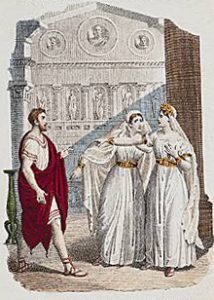
Orville
Orville is a reference to one of the two wright brothers who flew the first airplane. He was born in 1871 and died in 1948. He and his brother Wilbur wright, made the first successful flight in 1903 (Orville Wright, Biography, Biography.com)
Bartleby the Scrivener
As King directly references and explains in Green Grass Running water ” ‘Bartleby the Scrivener’ One of Herman Melville’s Short stories.” Is of course the lead character in Herman Melville’s short story which you can read here. The story is of a lawyer who hires a man named Bartleby to help out about the law offices. Bartleby eventually begins to sleep in the offices at night and refuses to do mundane work like proofreading and copying. The lawyer gets frustrated with him and asks him to leave, or move in with him. Bartleby declines. Eventually the lawyer gets frustrated and moves his entire office. New residences complain a strange man is wandering the hallways, it is Bartleby. Bartleby is arrested, and after he is released, he dies of malnutrition. This story is a commentary on poor working conditions and the employers attempt to not take responsibility for his workers. King is making a direct reference to this story, casting the government of Canada as the Lawyer and indigenous people as Bartleby.
Herman Melville.
Herman Melville is a famous writer, who died broke and unread until many years after his death. He is famous for writing the above story Bartleby the Scrivener and his masterpiece Moby Dick.
Coyote
Coyote is a dominant figure in many indigenous tribes in North America, both in Canada and the United States. He is known as a trickster with bad luck. He can transform his shape, and create things simply by dreaming. He is noted for his intelligence and cunning. According to Native Languages.org “he is a sort of antihero who demonstrates the dangers of negative behaviors like greed, recklessness, and arrogance; in still others, he is a comic trickster character, whose lack of wisdom gets him into trouble while his cleverness gets him back out. In some Native coyote stories, he is even some sort of combination of all three at once.” (Coyote, Native Lanaguages, North American Coyote Mythology)
Works Cited (Get Ready)
“Noah | Biblical Figure”. Encyclopedia Britannica, 2019, https://www.britannica.com/topic/Noah.
“Native American Indian Coyote Legends, Meaning And Symbolism From The Myths Of Many Tribes”. Native-Languages.Org, 2019, http://www.native-languages.org/legends-coyote.htm.
Flick, Jane. “Reading Notes for Thomas King’s Green Grass, Running Water.” Canadian Literature, vol. 161/162, 1999, pp. 140-172.
Editors, Biography.com. “Herman Melville Biography”. The Biography.Com Website, 2019, https://www.biography.com/people/herman-melville-9405239.
Melville, Herman. “Melville, Herman. 1853. Bartleby, The Scrivener”. Bartleby.Com, 2019, https://www.bartleby.com/129/.
Editors, Biography.com. “Orville Wright”. Biography, 2019, https://www.biography.com/people/orville-wright-20672999.
Séguin, Xavier. “Merlin The Magician – Eden Saga – English”. Eden Saga – English, 2019, https://eden-saga.com/en/celtic-mythology-gandalf-time-travel-sorcerer-druid-truie-qui-file-wizard-merlin.html.
“Norma (Opera)”. En.Wikipedia.Org, 2019, https://en.wikipedia.org/wiki/Norma_(opera).
“Cadbury Castle, Somerset”. En.Wikipedia.Org, 2019, https://en.wikipedia.org/wiki/Cadbury_Castle,_Somerset.
“Camelford”. En.Wikipedia.Org, 2019, https://en.wikipedia.org/wiki/Camelford.
Editors, Encyclopedia Britannica. “Caerleon | History, Castle, & Roman Fortress & Baths”. Encyclopedia Britannica, 2019, https://www.britannica.com/place/Caerleon.
Editors, Encyclopedia Britannica. “Camelot | Arthurian Legend”. Encyclopedia Britannica, 2019, https://www.britannica.com/topic/Camelot-Arthurian-legend.
Goldman, William. “Butch Cassidy And The Sundance Kid (1969) – Imdb”. Imdb, 2019, https://www.imdb.com/title/tt0064115/.
Editors, Biography.com. “Butch Cassidy Biography”. The Biography.Com Website, 2019, https://www.biography.com/people/butch-cassidy-9240908.
“Hole In The Wall Gang – The Wild West”. Thewildwest.Org, 2019, http://www.thewildwest.org/cowboys/wildwestoutlawsandlawmen/183-holeinwallgang.
Editors, The biography.com. “Sundance Kid Biography”. A&E Television Networks Website, 2019, https://www.biography.com/people/sundance-kid-9499214.
Editors, Encylopedia Britannica. “Noah | Biblical Figure”. Encyclopedia Britannica, 2019, https://www.britannica.com/topic/Noah.
“The Book Of Genesis”. Vatican.Va, 2019, http://www.vatican.va/archive/bible/genesis/documents/bible_genesis_en.html.
“The Great Flood – Livius”. Livius.Org, 2019, https://www.livius.org/articles/misc/great-flood/.
Tesar, Alex. “Treaty 8 | The Canadian Encyclopedia”. Thecanadianencyclopedia.Ca, 2019, https://www.thecanadianencyclopedia.ca/en/article/treaty-8.
“Manitoba Laws”. Web2.Gov.Mb.Ca, 2019, https://web2.gov.mb.ca/laws/statutes/ccsm/p250e.php.
Hall, David J. “Sir Clifford Sifton | The Canadian Encyclopedia”. Thecanadianencyclopedia.Ca, 2019, https://www.thecanadianencyclopedia.ca/en/article/sir-clifford-sifton.
Encyclopedia, New World. “Eli – New World Encyclopedia”. Newworldencyclopedia.Org, 2019, http://www.newworldencyclopedia.org/entry/Eli.

